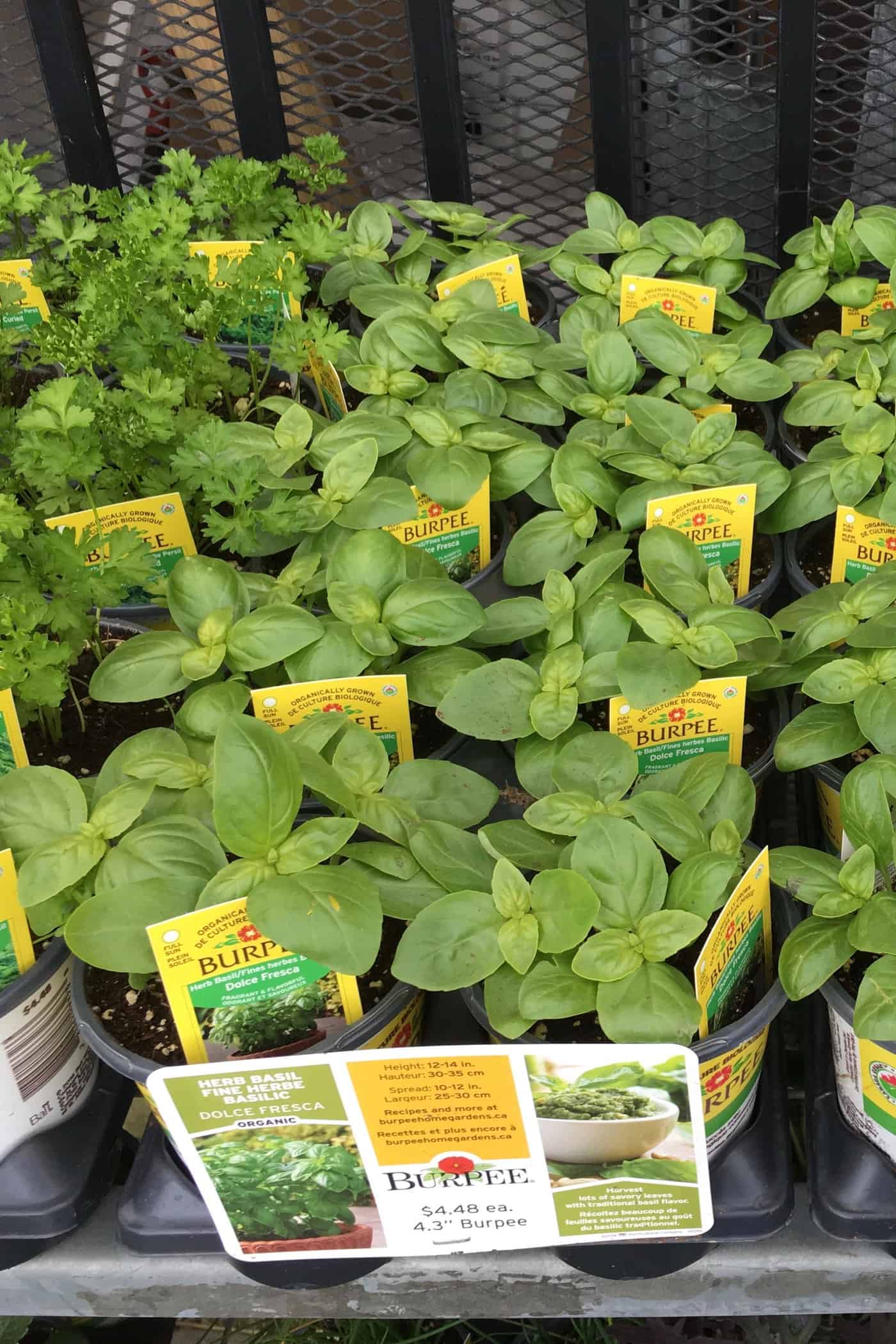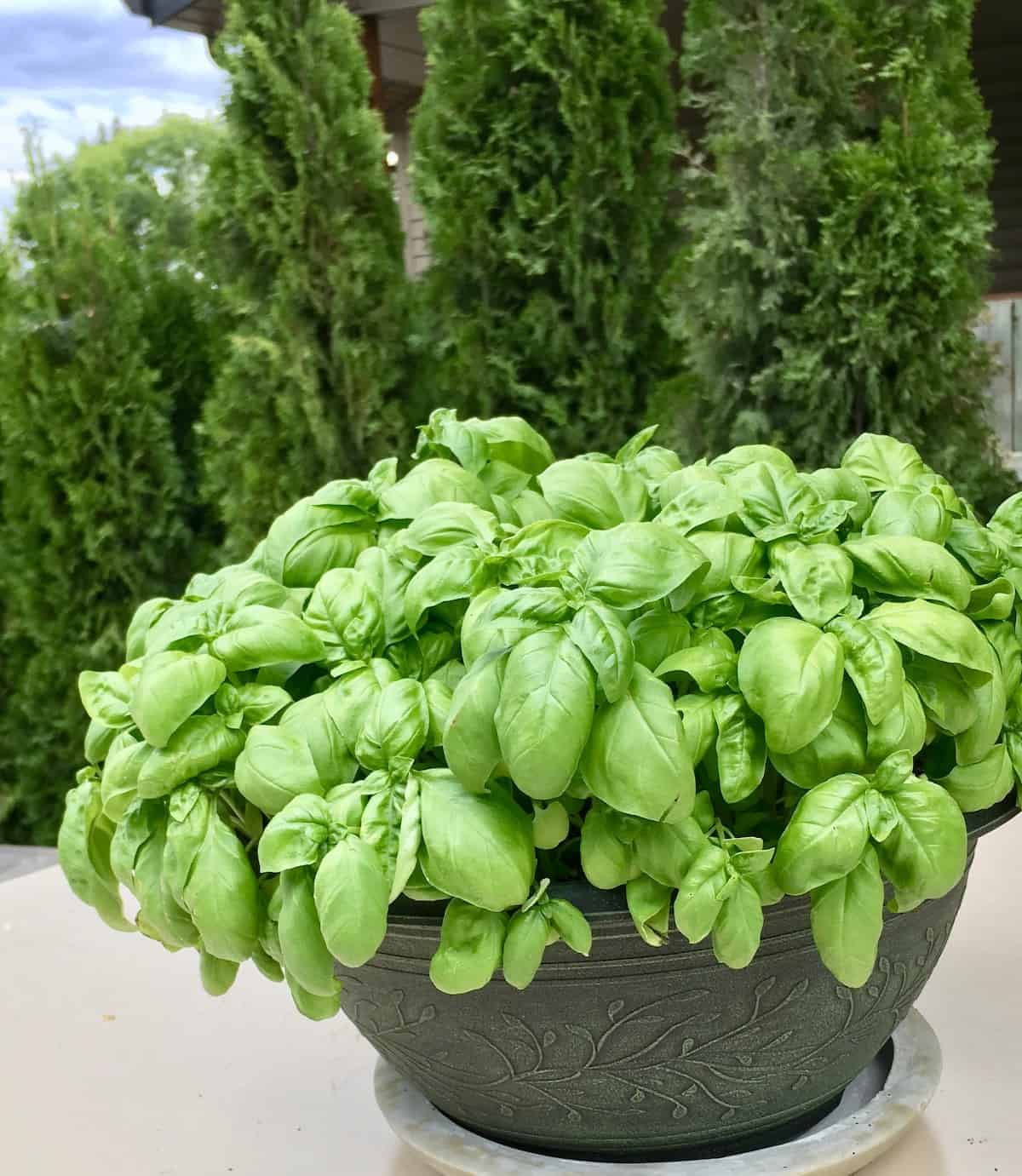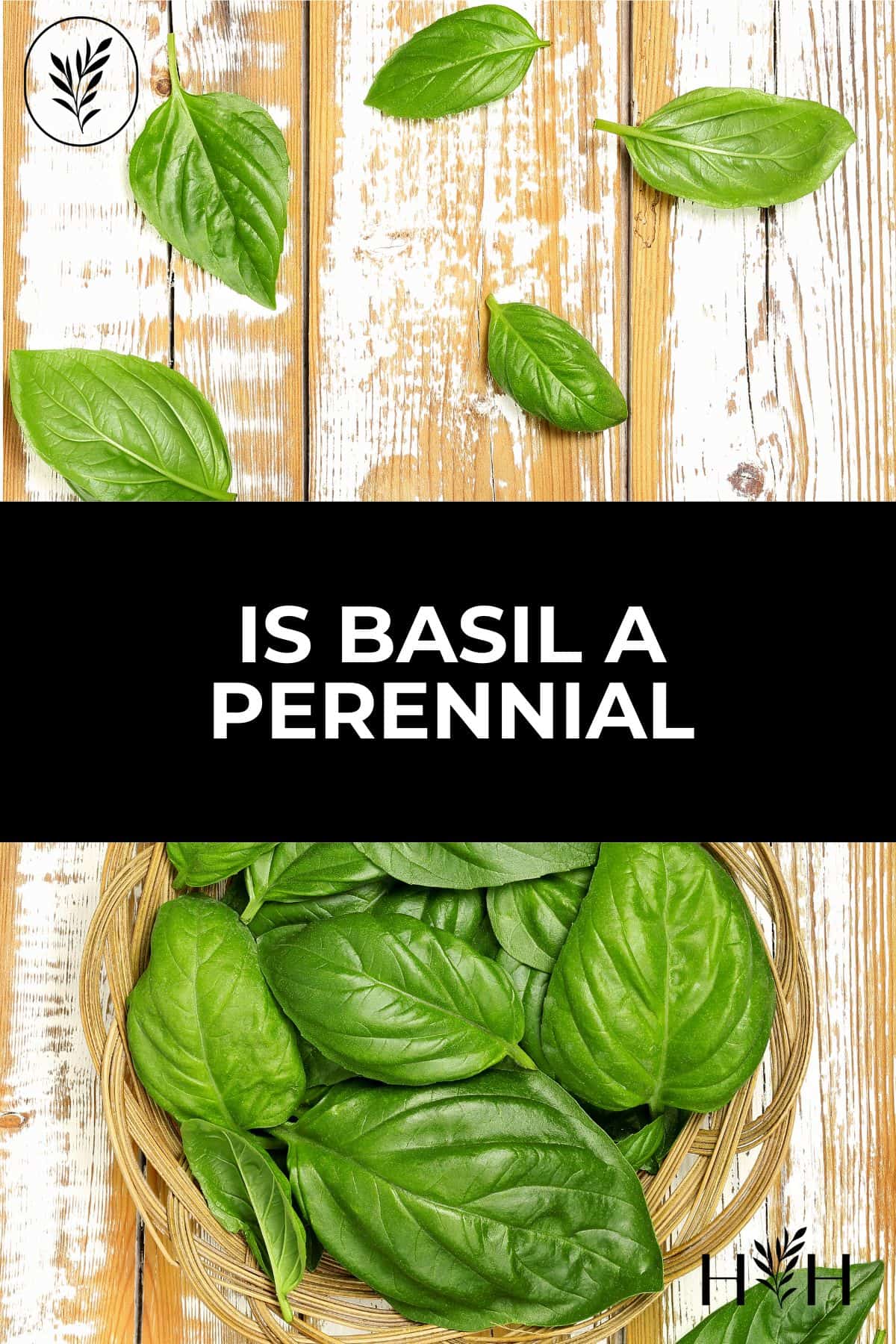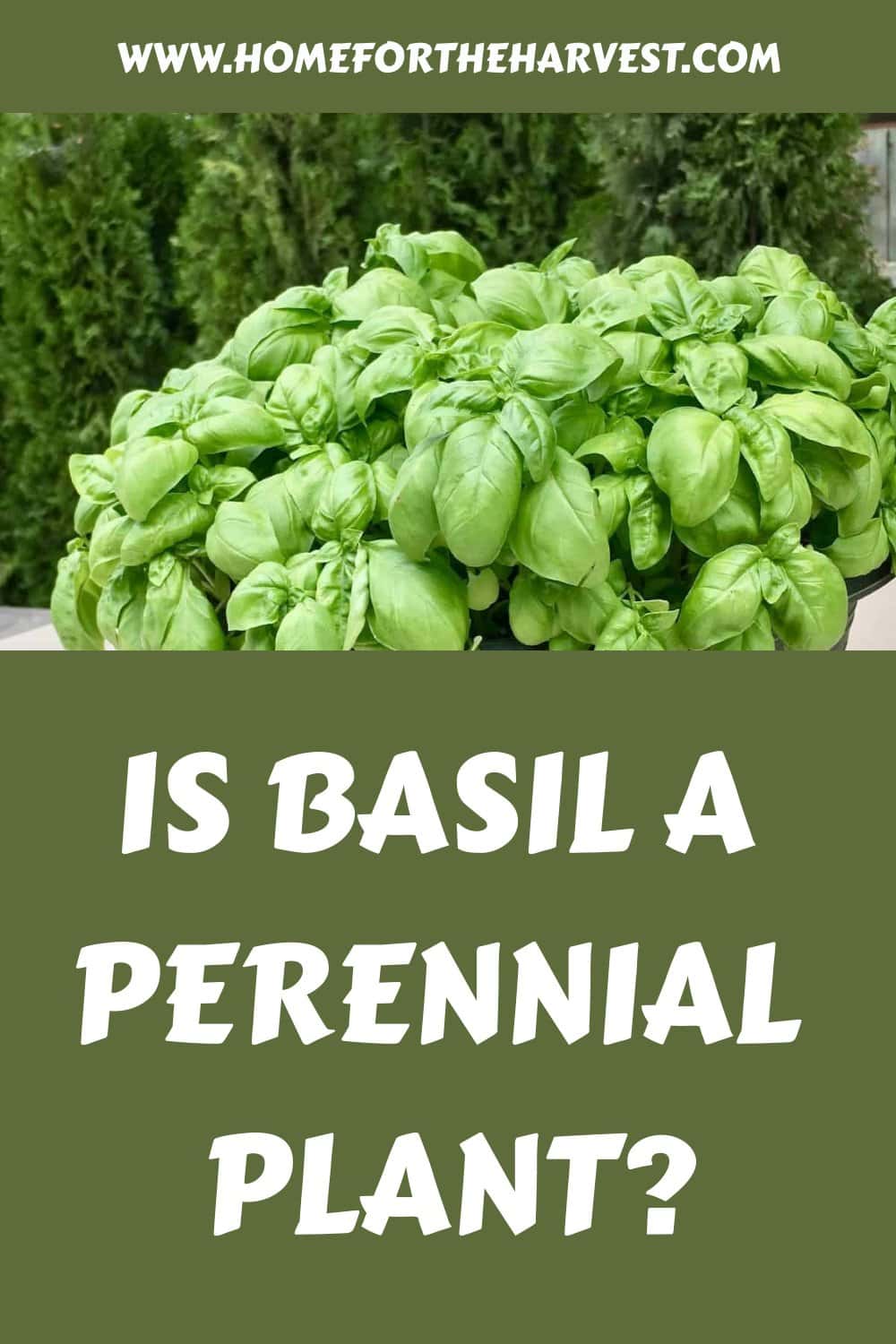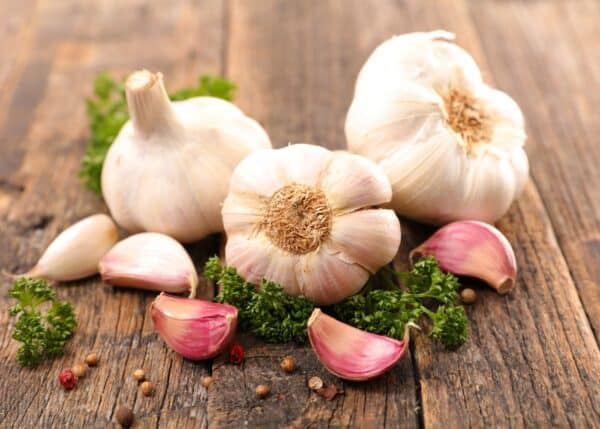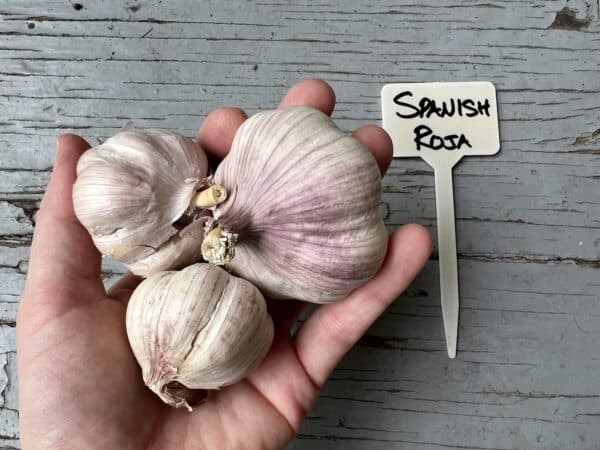Basil is typically grown as an annual plant in the garden. While some types are technically short-lived perennials in their warm native climates, most culinary types (including sweet basil) generally do not survive light frost and are too tender to come back from the roots after winter.
Introduction to the basil plant life cycle
Basil plants are usually annual plants and sometimes subshrubs. Basil plants typically complete their life cycle in under one year, from germination to seed production. They usually die in the fall due to cold weather but may survive and develop into subshrubs if growing conditions allow.
“Ocimum basilicum: The native range of this species is Tropical & Subtropical Asia to N. Australia. It is an annual or subshrub and grows primarily in the seasonally dry tropical biome.”
Plants of the World Online, Kew Botanical Gardens
Basil plants are commonly cold-hardy only to USDA Plant Hardiness Zone 11. Because they are so intolerant to cold temperatures of wintertime, the plants commonly propagate from the seeds that they drop in the summer of their first growing season. That said, if protected from cold and otherwise cared for, the plants can live beyond a single growing season and develop a woody base.
- USDA lists Sweet Basil (Ocimum basilicum) as both annual & perennial
- EOL lists Sweet Basil (Ocimum basilicum) as having an annual life cycle habit
- Giant Basil plant on YouTube, grown in climate that stays above freezing
- FuntaStick Ocimum grafted ‘Basil Tree’ (‘Long Foot’ Basil)
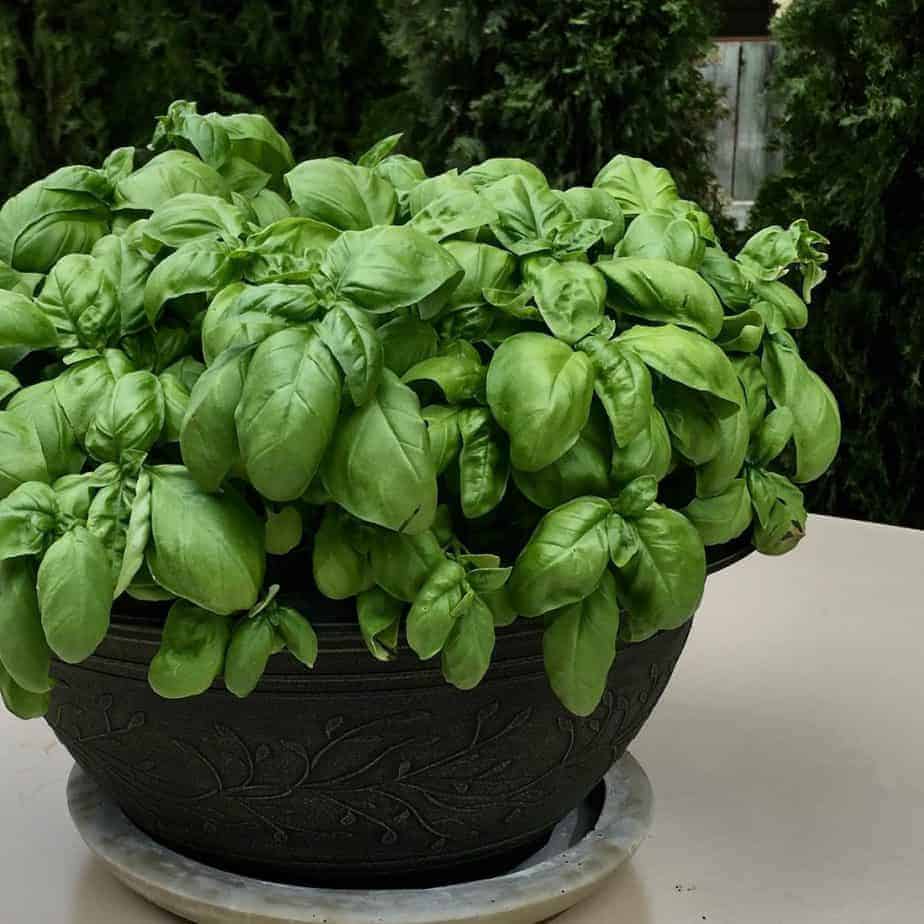
Basil plants do not come back every year
Sweet Basil (Ocimum basilicum) is an annual herb in the culinary herb garden. New seeds, plants, or cuttings need to be planted each spring. Basil plants grow from spring seeds, produce summer basil leaves, and eventually flower and grow seeds as fall approaches. Then they’re done as soon as the first frost arrives!
The lifespan of a basil plant is less than one year in any climate that experiences frost. Annual garden herbs like basil die with the first frost – roots and all. It won’t perk back up in spring after the winter freeze. It won’t come sprouting back up from the roots.
Since basil plants do not survive winter, basil can only be a year-round outdoor plant in warm climates where temperatures do not go below freezing. In climates with frost during the winter, new basil seeds or plants need to be planted each spring. Basil is also re-seeded in frost-free climates, whether by a gardener or by self-seeding.
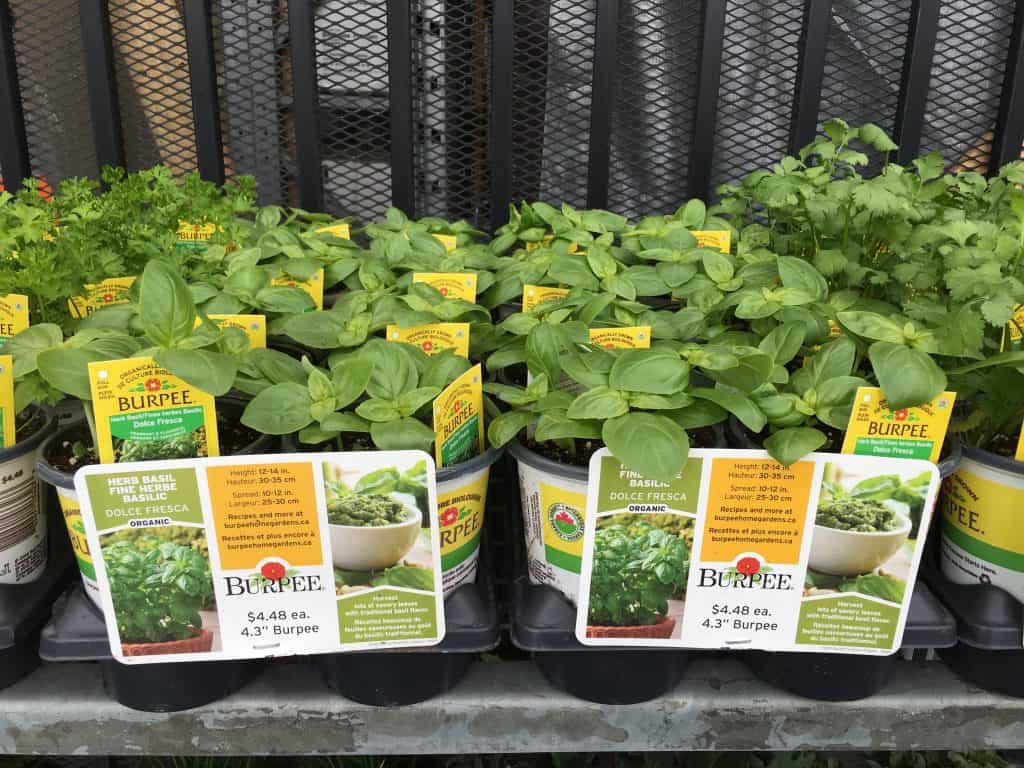
Growing new basil plants every year
Basil grows easily from seed. Young plants are also readily available and can commonly be found in most grocery and hardware stores. For less-common varieties, ordering basil seeds is your best option.
Basil needs to be seeded or planted each year. It can also be re-seeded every few weeks during the growing season to ensure a continuous supply of young, flavourful basil. You can also re-plant cuttings to create a continuous crop of basil. Basil plants can then be harvested for their savory leaves all summer.
Young plants that haven’t grown flowers yet seem to produce the most basil leaves. Re-seeding every few weeks also lets the older plants flower and go to seed. Bees and other pollinators love basil flowers, so it’s not bad to let your basil continue through its lifespan and flower.
Basil plants complete their life cycle in the garden in one year. The plant starts as a seed (or cutting from another plant) in the spring. In the summertime, basil plants grow flowers, producing next year’s seeds. The seeds grown in the fall can be saved and replanted and will start to germinate and grow during the following spring.
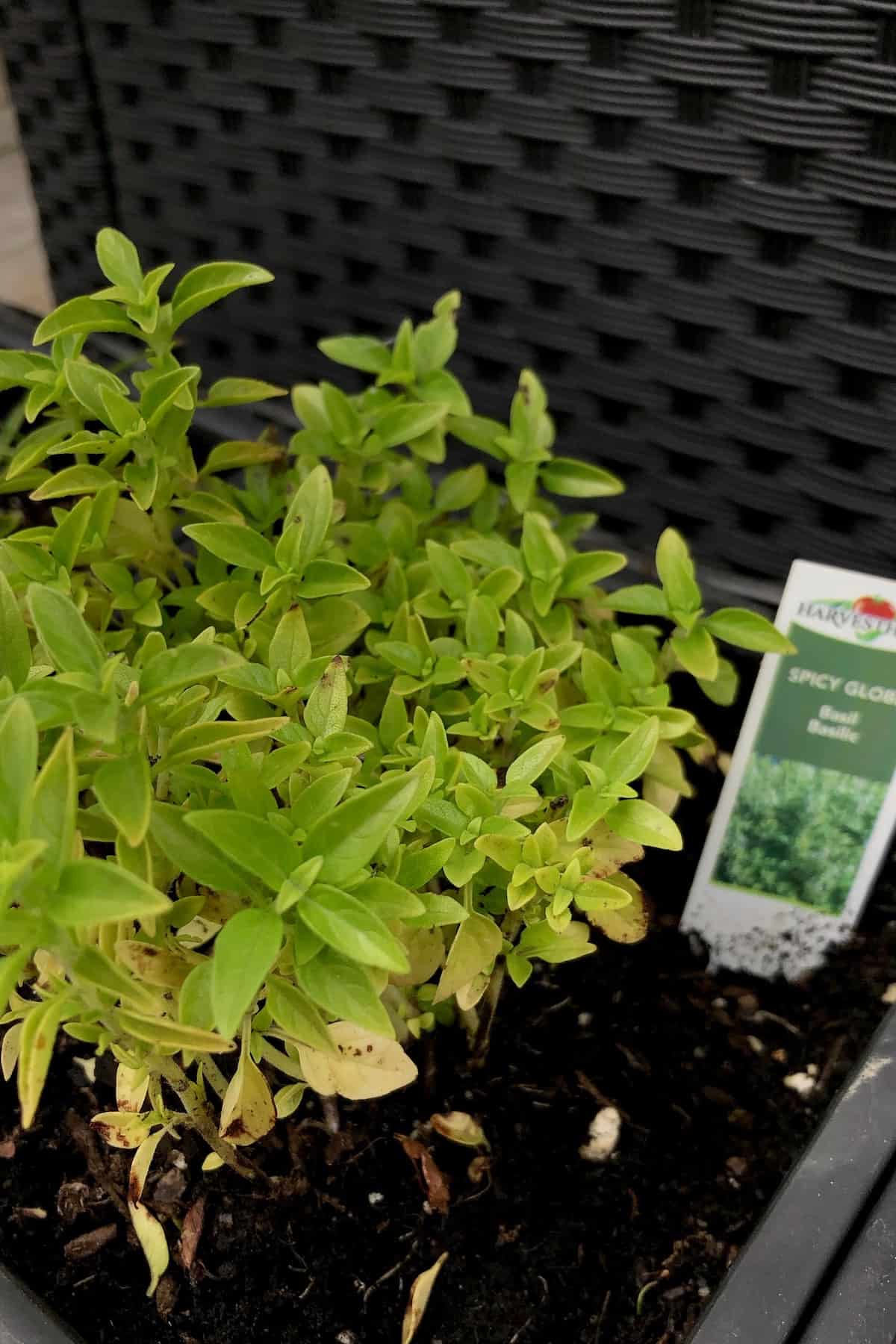
The last harvest of outdoor basil plants should happen before the threat of frost is in the weather forecast. If you’re not quite ready to part with your basil plant, it can be moved indoors, protecting it from harsh winter weather.
Growing basil as a year-round plant
Outdoor basil is not a year-round plant unless your garden is far from any frost danger. Even if you live somewhere with a cold winter, basil can be grown year-round indoors. Basil plants can also be grown outdoors in the summer and taken inside in the fall.
Basil grows fairly well indoors over winter, as it’s generally happy in a container. An indoor basil plant with lots of light and steady warm temperatures may last longer than an outdoor plant. Here is a wonderful video about growing basil indoors:
Just remember that basil plants aren’t meant to live forever. Basil plants aren’t reliable perennials in the herb garden (like chives or thyme). They grow leaves, flowers, and then seeds….and then they’re done.
My dad once grew a single basil plant indoors for a year and a half. By the end, it was just a tall, sad woody stem with honestly two little leaves on it. It was not a happy camper.
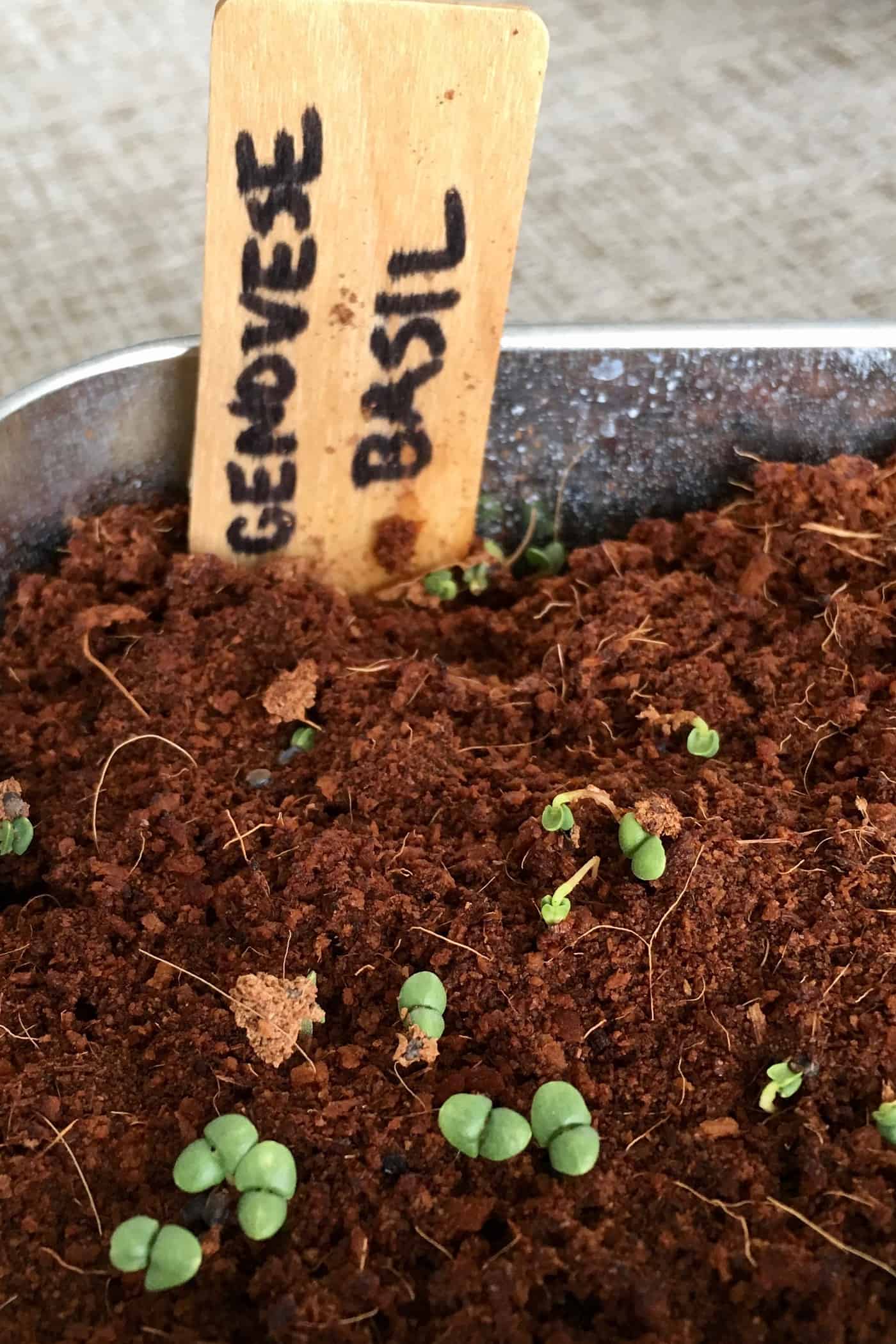
Indoor basil grows very well, however, as a microgreen. Growing my indoor basil as micro greens is now my favorite way to enjoy the herb during the winter. Here are instructions on how to grow your own basil microgreens.
If growing basil in the house is too much of a bother, basil can be saved in the summer to last through winter. Harvest the stems and strip the leaves from each stem. Spread the leaves in a single layer and let them dry out, or freeze (also in a single layer) and keep frozen in an airtight container.
Certain varieties of basil have been specifically cultivated as perennial plants in the warmest climates.
Will basil re-seed itself? Or, is basil a self-seeding annual, almost like a perennial?
A vigorous basil plant can certainly reseed itself if left to flower. Its natural annual lifecycle is to germinate, sprout, flower, and produce seeds. Basil seeds that fall into garden soil sometimes germinate without any help from a gardener. Basil is no more work than a perennial in these situations. While basil self-seeding is unreliable, you may find some tiny little basil plants in your garden next summer if your basil has gone to seed!
To help basil re-seed itself, gardeners can save seeds from their basil plants from year to year. Once the flowers on your healthiest plants go to seed and dry on their little spires, the seeds are ready to collect. Pluck off the dry seed pods and separate out the little black seeds (they look kind of like poppy seeds). Store in a dry, airtight location.
If saving your own basil seeds sounds like too much work, just wait and see if your basil happens to re-seed itself. If your basil does re-seed itself….great! Your basil isn’t any more work than a perennial flowering plant. If not, it’s totally good just to buy new basil seeds when you need them. Lots of gardeners like to buy new seeds regularly anyway, just for some variation.
Gardeners can re-seed basil themselves simply by sprinkling seeds over the top of the potting soil. The seeds are so tiny that they don’t need to be pre-soaked or buried in the potting soil. Seeds germinate on the top of the potting soil with consistent moisture and light.
